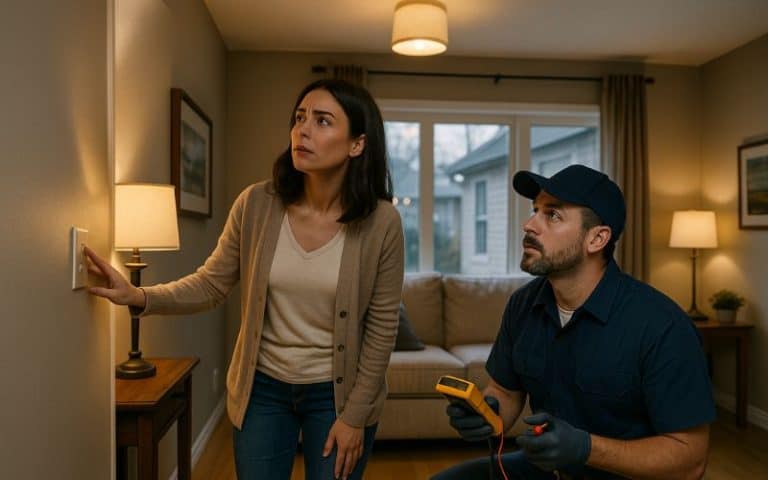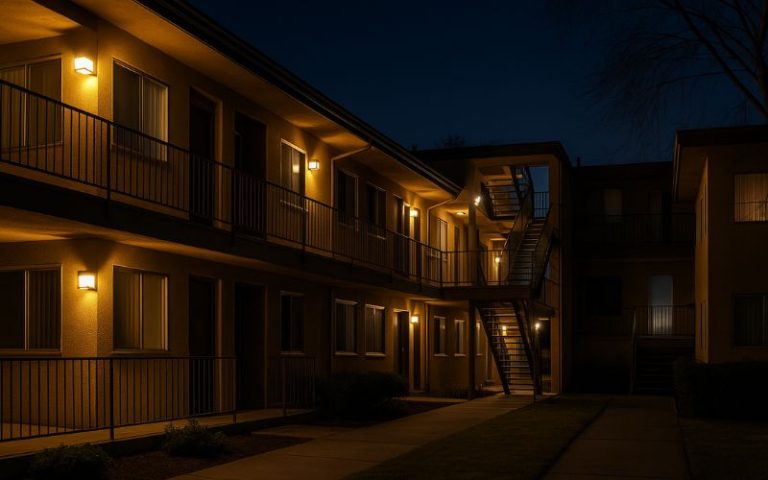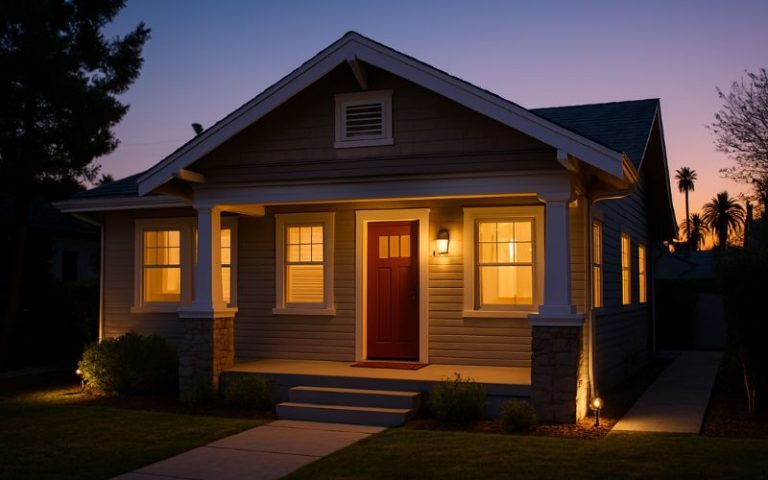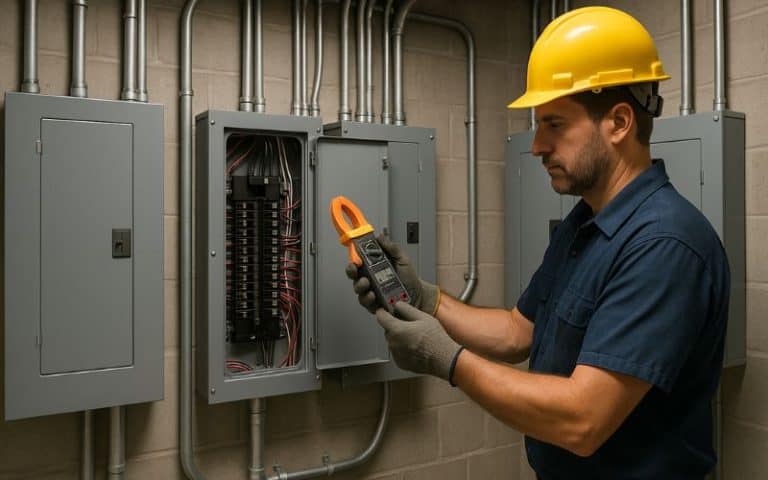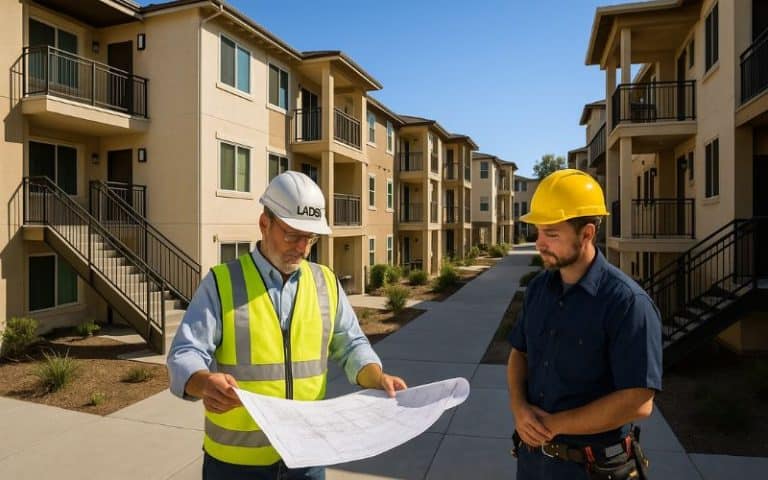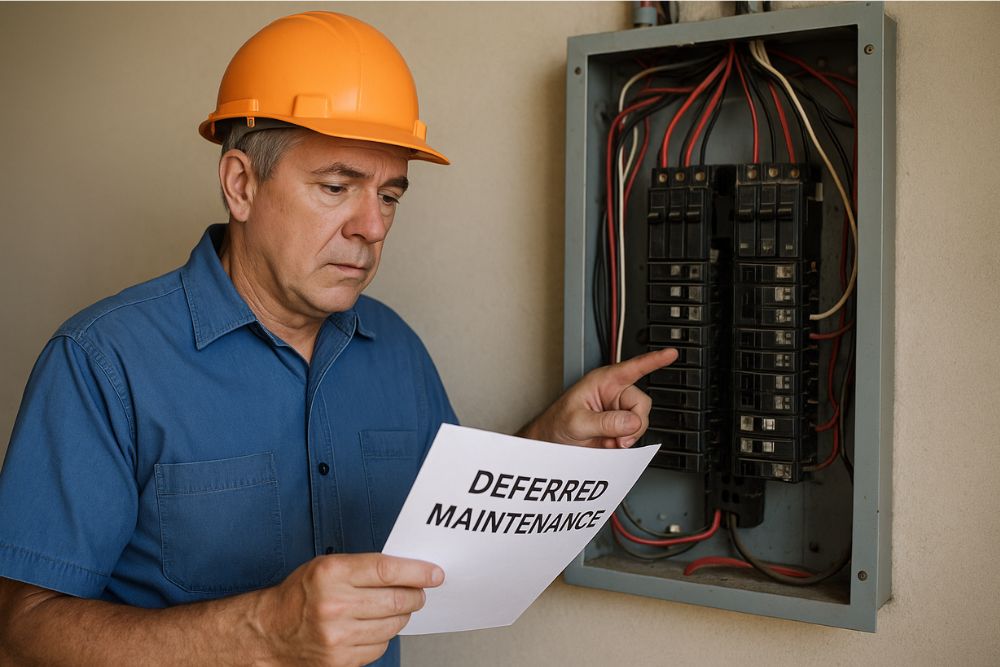
The Hidden Cost of Deferred Electrical Maintenance in Apartment Complexes
Out of Sight, Out of Budget—Until It Fails
As a property manager in Los Angeles, you’re constantly weighing what needs fixing now versus what can wait. It’s easy to postpone electrical upgrades or inspections—after all, the lights are still on, and breakers haven’t tripped today. But just because a building’s electrical system seems to function doesn’t mean it’s safe, efficient, or compliant.
Deferred electrical maintenance is more than just risky—it’s expensive. Minor issues quietly snowball into major liabilities. Hidden faults lead to sudden outages. And neglected upgrades eventually draw the attention of inspectors, insurers, and unhappy tenants. In this article, we’ll explore how small oversights turn into massive costs and what you can do today to get ahead of the curve.
What Is Deferred Electrical Maintenance?
Deferred maintenance is the postponement of necessary repairs or upgrades due to budget constraints, time pressures, or underestimating the risk. In electrical systems, this includes:
- Ignoring outdated panels like Zinsco or Federal Pacific: These obsolete panels are known for significant safety failures. Breakers in these systems often do not trip during overloads, creating high risks of electrical fires. They are so hazardous that many insurance companies refuse to insure buildings using them. RG Electric’s panel upgrades replace these with modern, safe systems.
- Delaying breaker replacements: Breakers can become worn, corroded, or sticky over time, which reduces their responsiveness. Delayed replacement can result in dangerous overheating during faults or power surges.
- Skipping routine load checks: Without routine load assessments, property managers may unknowingly overload circuits or panels, especially in buildings where tenants upgrade appliances or install energy-intensive systems.
- Putting off rewiring or grounding fixes: Old wiring—especially from the pre-1980s—may lack adequate grounding or may be deteriorating inside walls. This raises the risk of both electrical shock and failure to meet code during an inspection.
- Avoiding surge protection or sub-panel upgrades: Whole-building surge protectors and properly distributed sub-panels are key to protecting both tenants and systems. Without them, the electrical system is vulnerable to overload, especially as more units add EV chargers or advanced electronics.
These issues may not cause immediate outages, which is why they’re often overlooked. But they steadily strain your system, increase fire and liability risks, and set the stage for major failures that are much more expensive to fix later.
Hidden Costs That Add Up Fast
1. Emergency Repairs
Emergency calls for electrical failures often come at a premium. A sudden outage that disrupts multiple units on a Saturday night? Expect to pay 2–3 times the cost of scheduled maintenance. RG Electric’s inspections catch issues early to avoid costly emergencies.
2. Insurance Complications
Outdated panels, ungrounded systems, or unpermitted upgrades can void policies or trigger denied claims. Insurers increasingly request electrical safety documentation—and when they don’t get it, they hike your premium or walk away.
3. Failed Inspections and Violations
Los Angeles building inspectors don’t just respond to complaints—they conduct random checks and follow up on work permits. A non-compliant panel or unsafe wiring can stall building projects, trigger fines, or lead to partial building shutoffs.
4. Tenant Turnover and Reputation Damage
A flickering light or burnt outlet may seem small, but tenants notice. When they start experiencing frequent power problems or delayed repairs, they leave bad reviews, break leases, or choose better-managed properties.
5. Property Value Decrease
Electrical systems that are non-compliant or outdated reduce your building’s appraised value. Worse, they turn off potential buyers during due diligence.
Why It’s Especially Critical in Los Angeles
LA’s aging building stock means many properties still rely on panels and wiring systems from the 1960s to 1980s. These systems were never built to accommodate the high energy demands of today’s tenants, let alone future-proofing for what’s to come. At the time, most apartments were outfitted with basic lighting, minimal outlets, and low-capacity kitchen appliances. Compare that to today, where tenants expect to power high-efficiency HVAC systems, multiple large-screen TVs, computers, modern kitchen suites, and even electric vehicles.
Wiring insulation in these buildings may be brittle, aluminum conductors may have been used instead of copper, and grounding systems might be incomplete or unsafe by current standards. Panels from this era often top out at 60 to 100 amps per unit—well below what is needed for modern appliances and electronics.
Compounding this, California’s push toward electrification—driven by energy efficiency goals, decarbonization targets, and evolving environmental regulations—places even greater pressure on outdated systems. New codes from LADBS require arc fault and ground fault protection, updated load calculations, and infrastructure that can support solar integration and smart metering.
Deferred maintenance on these aging systems not only puts buildings out of compliance but also raises the cost of future upgrades. As codes continue to evolve, catching up becomes harder, more expensive, and more invasive to tenants. The longer property owners wait, the more extensive and costly the retrofitting will be.
Real Scenario: A $5,000 Fix That Became a $35,000 Emergency
In 2023, RG Electric was called to a 20-unit apartment building in North Hollywood after half the tenants lost power. The cause? A failed main breaker in a Federal Pacific panel. The building had shown signs of stress for over a year, but repairs were repeatedly delayed.
The cost to replace the panel during a planned upgrade? Around $5,000. The cost after emergency service, temporary power, expedited permits, and tenant coordination? $35,000. The property manager called it the most expensive phone call of the year.
How RG Electric Helps You Stay Ahead
We work with property managers across Los Angeles to identify high-risk systems before they fail. Our goal isn’t just to fix what’s broken but to create a proactive maintenance strategy that protects your building, budget, and reputation.
We begin with a full safety inspection, focusing on your main service panel, sub-panels, wiring integrity, and grounding systems. If your property uses legacy equipment like Zinsco or Federal Pacific panels, we flag these for immediate attention and walk you through compliant replacement options via our panel services.
Next, we conduct detailed load calculations and assess your power distribution to see if your existing service is sufficient for current and future demands. This includes planning for the addition of EV chargers, HVAC upgrades, and energy-efficient appliances that are quickly becoming standard.
Our team handles full-service panel and wiring upgrades, including pulling permits, coordinating with LADBS, and scheduling inspections. We ensure all work meets both NEC and city-specific code, so you avoid costly rework or inspection delays.
We also specialize in installing surge protection systems and strategically placed sub-panels that balance loads across larger buildings. These not only improve performance but also reduce the risk of total-system failures.
Finally, for buildings that want to stay ahead long-term, we offer maintenance plans that include annual safety checkups, documentation updates, and on-call support. These services are particularly valuable for property managers juggling multiple buildings or trying to streamline compliance across a portfolio.
Most importantly, we help you document everything. Our reports and inspection logs support insurance audits, city reviews, and prospective buyers—helping minimize your liability and maximize your property’s value.
When to Take Action
Don’t wait for flickering lights or a late-night outage. If your building still uses outdated panels, lacks surge protection, or hasn’t had an electrical inspection in the last three years, it’s time to act.
Call to Action
You don’t have to wait for a crisis to fix what’s at risk. RG Electric can inspect your property, prioritize upgrades, and keep your building safe, code-compliant, and fully functional.
Call us at (323) 521-5131 or fill out the contact form to schedule an inspection or consultation.
Disclaimer: Always consult a licensed electrician like RG Electric for proper maintenance and code-compliant electrical work in Los Angeles.



